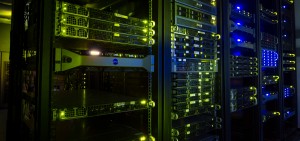 “CGRB server room” by Shawn O’Neil is licensed under CC BY 2.0
“CGRB server room” by Shawn O’Neil is licensed under CC BY 2.0
We are living in an age of unprecedented data growth and the rate at which this data is being created is only accelerating. Multimedia creation – images, videos and music – from both personal and professional sources is one significant driver of this trend. In 2014, YouTube revealed that about 300 hours of video content was uploaded to their platform every minute.
Another major contributor to new data growth stems from the Internet of Things (IoT) movement and the increased collection of user information. A recent Gartner report forecasts 6.4 billion connected devices will be in use this year, which represents a 30% increase from 2015. That’s a lot of available user data on consumer’s everyday habits.
As the appetite for creating data increases, so does the demand to quickly process that information. For companies that collect user information from social media platforms, streaming applications or IoT devices, analyzing massive sets of data is essential to detect significant consumer behaviors and market trends. Furthermore, a growing number of businesses and institutions depend on making sense of incoming data in real-time to help guide critical decisions.
The combination of big data and the need for speed is putting an excessive strain on existing enterprise networks and data centers. IT professionals are consistently tasked with exploring effective ways to run applications that process growing data sets within current enterprise network infrastructures, while also keeping overall system costs down. Simply adding additional servers would be too expensive and wouldn’t solve the inherent problem – inefficient use of compute resources.
Information acceleration technologies, such as RDMA over Converged Ethernet (RoCE), can step in to make an entire data center more efficient. RoCE enables higher resource utilization when moving data between servers via hardware offloads. By reducing CPU overhead, the CPU is freed up to focus its resources on processing information and executing applications. This increases overall system performance, lowers CPU idle time and saves overall costs by eliminating the need for additional servers.
Check out the RoCE Initiative’s solution briefs library to explore more real world examples on the benefits of RoCE.
